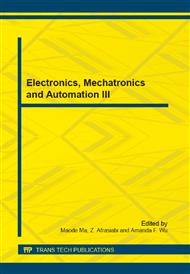p.22
p.27
p.31
p.36
p.41
p.46
p.53
p.59
p.64
Combustion Properties of Briquette Charcoal from Durian Peel
Abstract:
This work aimed to use durian peel as raw material for producing bio-briquette charcoal by combustion and gasification. Briquette charcoal obtained was proposed as an alternative thermal energy for household. The producing process began from washing, drying and then pyrolyzing under carbonization by the designed drum dryer furnace. The pyrolyzed durian peels were crushed and grinded before densified in the designed extrusion briquette producing unit using tapioca starch as a binder. Durian peel briquette charcoals were mixed with starch binder in three different mass ratios of 70:30, 72.5:27.5 and 75:25. The results presented that the density of briquette charcoal was between 0.25 and 0.27 g cm-3. The heating value appeared to be decreased with an increase of the starch binder. Briquette charcoal from the ratio of 75:25 gave the maximum heating value of about 24,382 J g-1, which was approximately 81% of commercial coconut shell briquette charcoal. Fire combustion test showed that the combustion times of the durian peel briquette charcoals were between 2.3 and 2.4 h, which were slightly lower than value of the commercial briquette charcoal (2.85 h).
Info:
Periodical:
Pages:
41-45
Citation:
Online since:
October 2014
Keywords:
Price:
Сopyright:
© 2014 Trans Tech Publications Ltd. All Rights Reserved
Share:
Citation:


